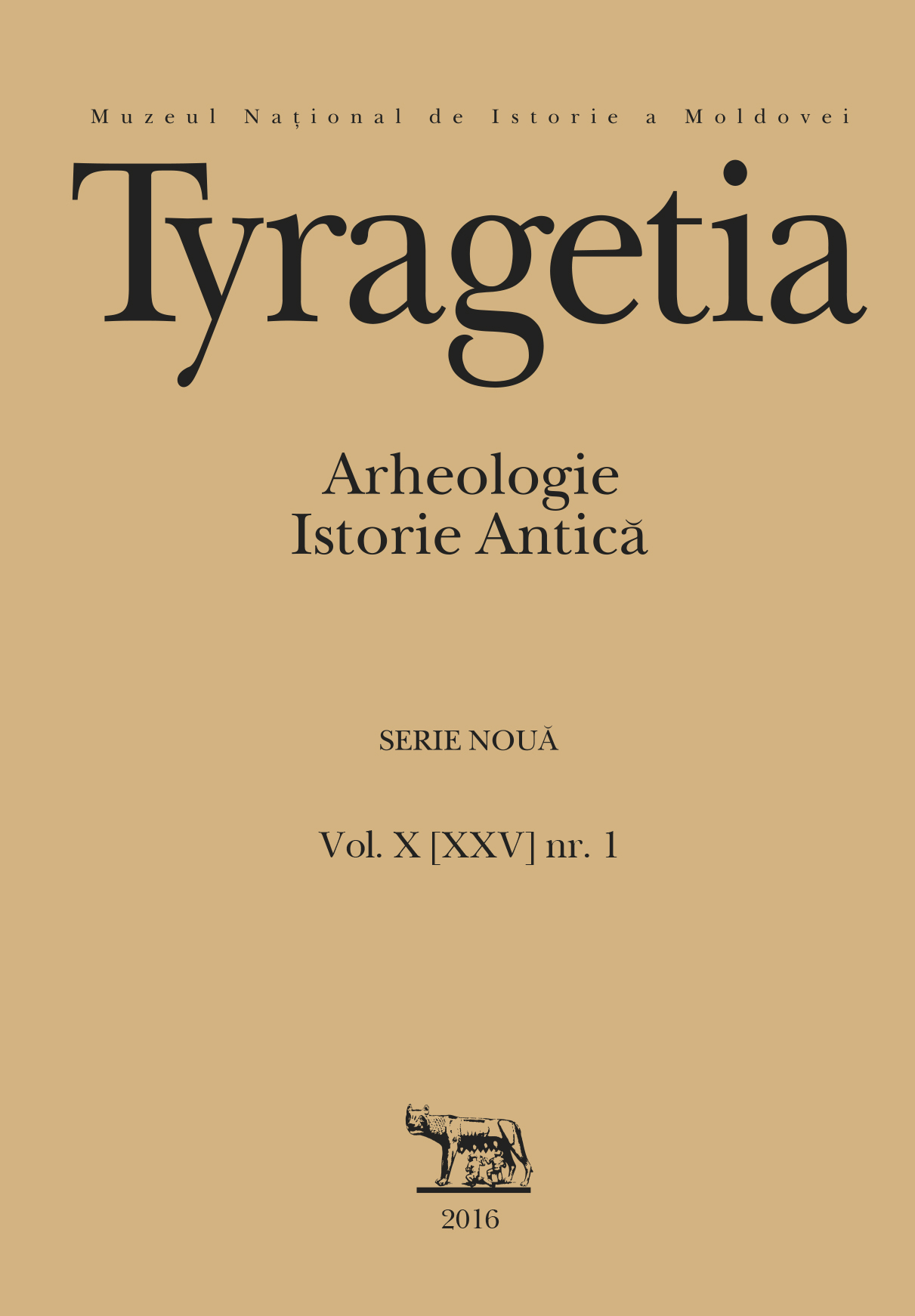Despre mormântul de incineraţie în situlă de bronz de la Sipoteni (sec. II-I a. Chr.)
Cremated remains in bronze situla from Sipoteni (2nd-1st centuries BC)
Author(s): Ion Tentiuc, Valeriu Bubulici, Angela SimalcsikSubject(s): History, Essay|Book Review |Scientific Life
Published by: Muzeul Naţional de Istorie a Moldovei
Keywords: Bronze situlae; funeral urns; odd hoards; East Carpathian region; Bastarnae; Celts
Summary/Abstract: In the work on the materials of a cremation burial in bronze situla of the 2nd-1st centuries BC, which was found in Mana village (Orhei district), we have taken for comparative and anthropological analysis remains of calcined bones from the burial in situla from Sipoteni (Călăraşi district) published in 1950s. Osteological research of the contents of the bronze vessel from Sipoteni showed that the remains belonged to a man 20-30 years old. In the burial urn a fragment of a black-burnished vessel, a silver fi bula of the Middle La Tene type, an iron ring, and an amorphous iron object were found. The grave goods also contain a bronze situla, identical in shape and size, which was found near the funeral urn. Researches attributed the Sipoteni burial to the 2nd-1st centuries BC, a period of domination of Bastarnae tribes in the central and northern part of the Carpathian-Dniester region. Our own comparative analysis of this type of bronze vessels showed that they are similar with identical containers from the Middle Danube sites, as well as from northern Italy, southern France and Spain, which were used by Celtic tribes as funeral urns. To the east of the Carpathians identical bronze vessels were found in the village of Mana, at the site of Bădeni (Iaşi), and as part of the so-called odd hoards from Bădragii Noi, Vesela Dolina, and Maryevka (in the region from the Eastern Carpathians to the Dnieper and the Don at least 50 so-called hoards were found), including ones in the bronze vessels, which we have mentioned. Some researchers’ attempts to attribute the situlae from Sipoteni, Bădragii Noi, Vesela Dolina, Maryevka, etc. to the type of Eggers 18-23 or the type of Bargfeld seem to us to fail, because these bronze vessels have slender shape, riveted bronze or iron attaches and the maximum diameter of the vessels is at the height of the fourth part. The East Carpathian situlae are of less slender proportions, and the largest diameter is located at the third part of the height of the vessels. In addition, the East Carpathian vessels have no trace of riveted attaches. They either have a different system of handles attachment or have no traces of them. Morphological features of bronze situlae found to the east of the Carpathians made it possible to attribute vessels without handles and attaches or traces of rivets to a special type – the type of Mana, and bronze containers with mobile iron handles – to the Bădragii Noi variant of the same type. Most researchers dated the bronze situlae within the 1st century BC. Analysis of the grave goods from the cremation burial complexes identified at Sipoteni and Mana (bronze situlae, silver fibula, weapons of Celtic type, etc.), as well as analysis of objects from odd hoards confirm that they belong to the 1st century BC, likely to the first half of this chronological interval.
Journal: Tyragetia (Serie Nouă)
- Issue Year: X/2016
- Issue No: 1
- Page Range: 39-74
- Page Count: 36
- Language: Romanian

